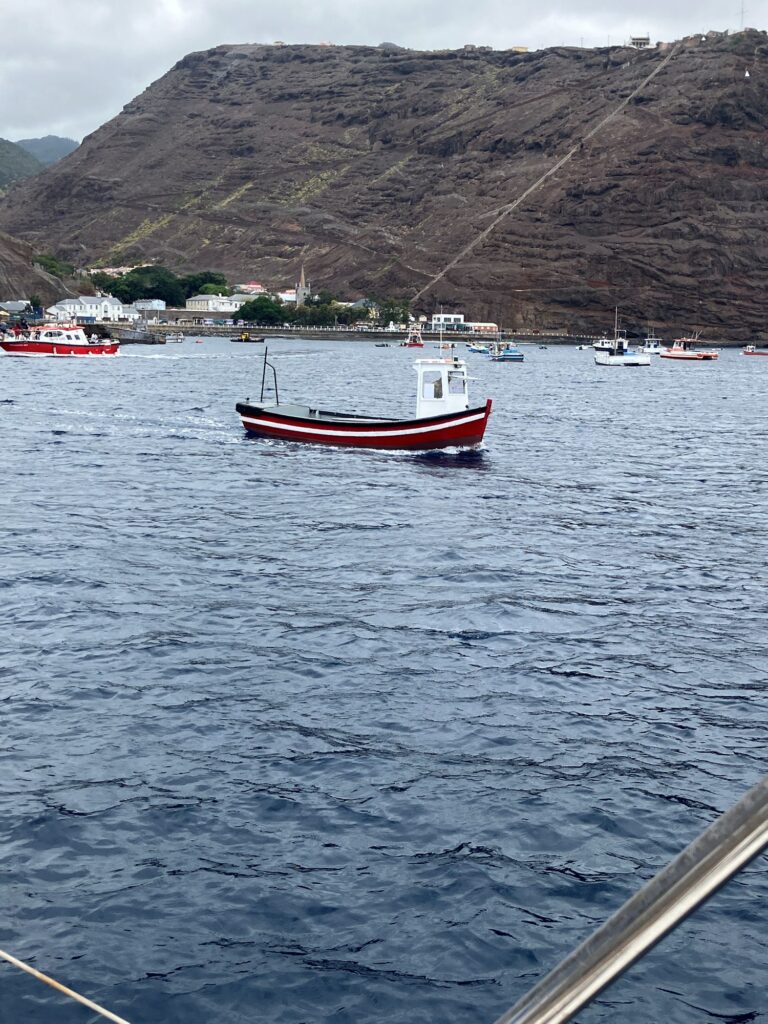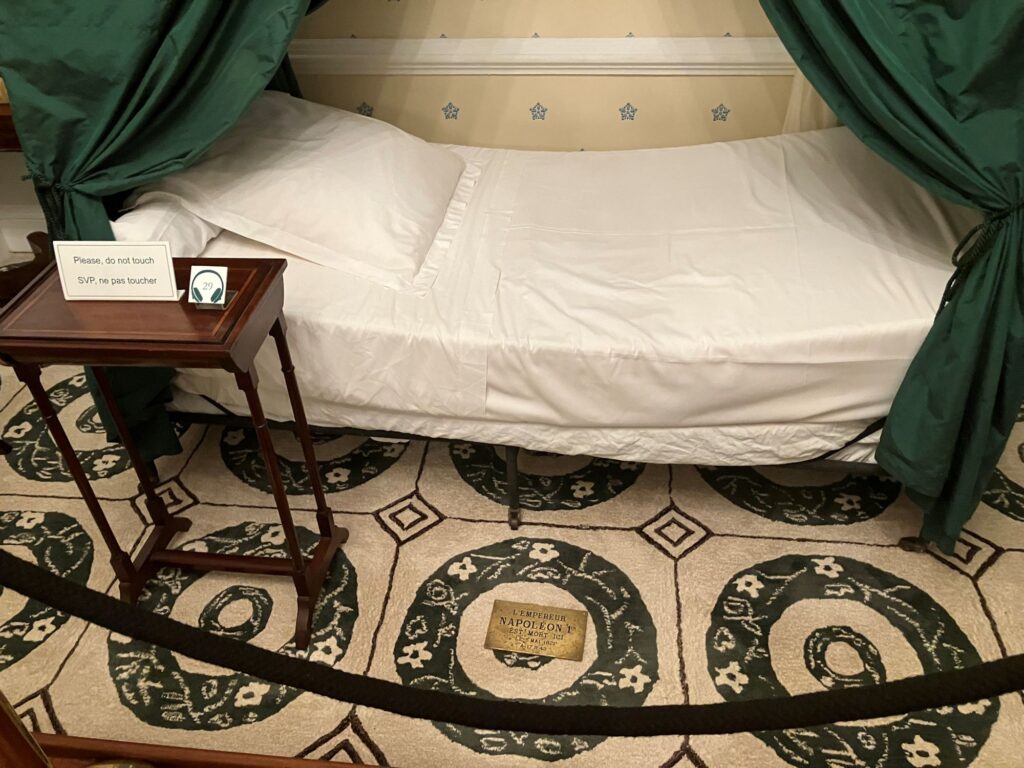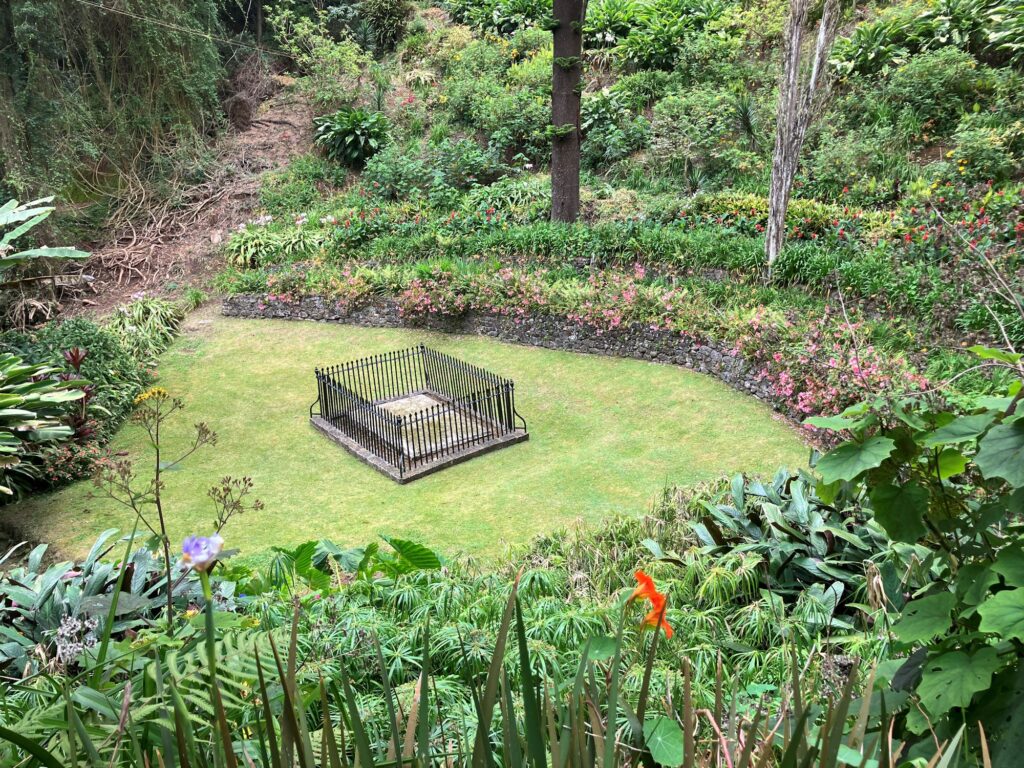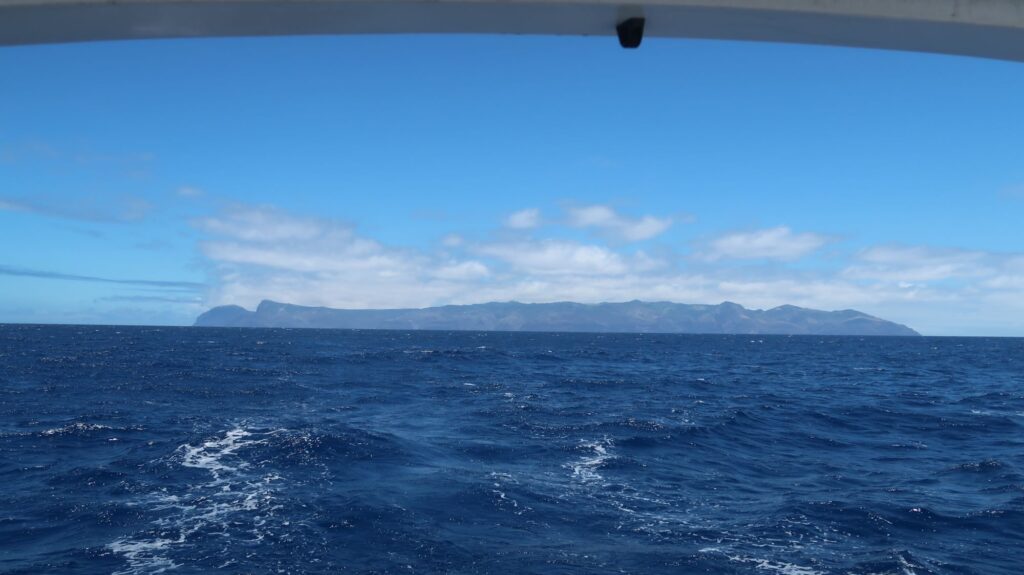This island is best known as the second exile location of Napoleon, the first exile being on the island of Elba in the Mediterranean which may be best known for the famous palindrome “Able I was ere I saw Elba”. I landed my plane in Elba, which is totally off the topic. Napoleon died on St. Helena in 1821 and was buried there. Through some diplomatic maneuvering, in 1840 the French persuaded the English to let them dig up Napoleon’s tomb and take his remains back to France. They were re-interred at Les Invalides in Paris where they remain today.
Never inhabited before Europeans arrived, St. Helena was supposedly discovered in 1502 by some Portuguese guy with too many syllables in his name, though some dispute that. Even so, it was in use early on by ships making the journey from Asia back to Europe as a stop for fresh water, timber for repairs and provisions once it was populated with animals. In this way it was similar to La Reunion island I visited this summer, both formed by seamount volcanos. Reunion is much bigger with a population of over 800,000; St. Helena’s population is only about 4,500. Of course, La Reunion is totally French-fried; St. Helena is tout à fait British. British pounds are used here although there is St. Helena money also in circulation on parity with the pound sterling. It’s hard to understand why they’d go to the trouble and expense of having their own currency which is useless elsewhere. They also have local credit cards which are more widely accepted than foreign credit cards like Visa.
Like Namibia, my AT&T cellphone wouldn’t roam onto the local network but I didn’t bother to get a SIM card; I really didn’t need to call anyone. I can’t remember the last place I was where the phone numbers are only 5 digits and the license plates are 4 digits.
I visited all the Napoleon stuff, of course, and took a tour of the island to get a feel for the place during the 4 days I was here. It was mildly interesting. Tourists do come on the weekly flights from Johannesburg to visit these places and also swim with whale sharks. Cruise ships stop for a day about once a month.
They used to have a popular field of mooring buoys for visiting yachts but they shut it down in January, 2024, because it urgently needed repairs. They say it really needs to be entirely replaced but they don’t have the money to do it. I had to anchor Phywave in 17 meters of water and let out most of my 80 meters of chain. The anchorage is not great, pretty rolly. Fortunately they have a little harbour ferry boat that will pick people up from their anchored yachts and take them to shore, 2.50 pounds return, a bargain.
I did manage to have conversations with a few locals in bars. One guy, a retired fisherman, claimed to have been born on St. Helena and spent most of his life there except for a stint in South Africa. He was slurring his words so I figured he’d already had a lot to drink or maybe he was just talking in cursive. He told me that sometimes the swells and chop in the harbour get so bad the little ferry can’t operate. That’s great, I thought, I need to ride it at least once more to get back to Phywave. Not wanting to dwell on bad boat stories, we changed the subject and he started talking about his family. “My mother started walking 10 miles a day when she turned 65. Now she’s 93 and we have no idea where she is.” Yup.
It was time to say goodbye to St. Helena, climb back on my boat, and start sailing northwest. As I watched the island recede over the horizon, I felt sentimental and a bit sad that this voyage was coming to end even though there are still several thousand miles left to sail. From the early planning in 2020, to starting to sail in 2022, until now, if feels like I didn’t savor all the moments enough, that they quickly slipped by. I hope when I write the book about this voyage I can re-capture their fleeting intensity and enduring impact on how I’ve experienced the world.










